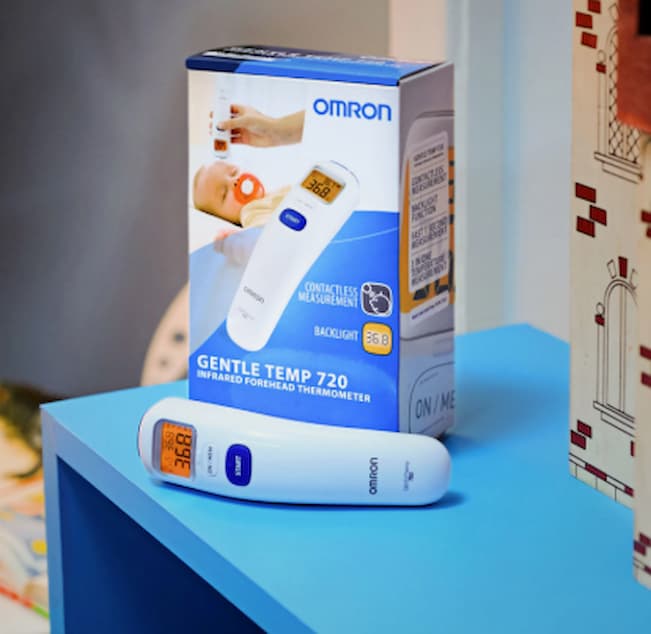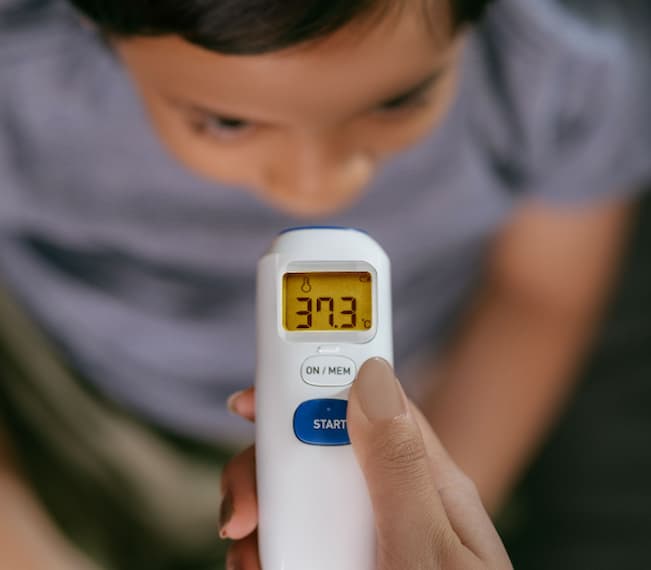The medical thermometer is the first line of defence when detecting an illness. Whether fighting a cold or monitoring a patient’s condition after a recent surgery, an accurate temperature reading can help you understand where you stand on the recovery journey.
This guide will walk you through how different thermometer types work and how to use them correctly for accurate health checks at home.
What Is a Medical Thermometer and Why Is It Essential?

Medical thermometers are practical tools that measure body temperature in just minutes. Whether you’re caring for someone or simply monitoring your health, knowing the exact body temperature is a crucial factor in determining medical treatment and an indicator of when to seek medical attention.
Sometimes, the slightest changes in body temperature can be a sign that your body is fighting off an infection, inflammation, or other medical conditions. Investing in a quality thermometre ensures accurate body temperature readings and helps you track health changes, whether at home or in a clinical setting.
Common Uses of a Medical Thermometer
Medical thermometers have multiple purposes, making them a necessary item in everyone’s home. Here are some of the uses they serve:
- Detecting Fever: Elevated body temperature shows that your body is experiencing changes or possibly an illness
- Monitoring Illness: Once you establish what is going on with your body, monitoring the temperature tells you if you are in recovery or if your symptoms are worsening
- Healthcare Screening: Used in professional settings, clinics, and hospitals, to evaluate patient health
- Pediatric Care: Children may not express symptoms, so checking their body temperature is a good start in diagnostics
- Post-Surgery Monitoring: Clinical thermometers detect early signs of infection or complications
- Home Health Management: Serves as a tool that helps caregivers monitor health easily
- Public Health Screening: Used in airports and public spaces during epidemics and pandemics
Having a dependable healthcare thermometer on hand can offer you peace of mind for you and your loved ones. Choosing the right one is a step to easy health management.
The Different Types Explained
When it comes to body temperature measurement, there are all kinds of clinical thermometers to choose from. Understanding the differences between them can help you choose the one that is most convenient for you.
Digital
A digital thermometer offers quick and precise readings. You can place it under the tongue, in the rectum, or in the armpit. Rectal readings are the most reliable option for infants. However, older children and adults will get the best readings with oral readings at least 15 minutes after eating or drinking.
They have the most accurate results since armpit readings are cooler, and rectal readings are warmer than oral. Don’t forget to label rectal and oral thermometers clearly and keep spare batteries for replacement in emergencies.
Tympanic
Tympanic or ear thermometers use infrared sensors to quickly and comfortably measure the temperature inside the ear canal. This mechanism makes them convenient for infants over 6 months and children.
Avoid them unless it is the only one your child can handle. They are not suitable for newborns, and factors like earwax or a small ear canal can affect the result. If you do use one, make sure it is positioned properly and always follow the manufacturer’s instructions for reliable results.
Forehead
You may also find them under their other name, temporal artery thermometers. They use infrared sensors to scan your forehead and measure temperature quickly without making contact. If you’d like to avoid oral or ear devices, especially in public settings, these are ideal.
To make the most out of it, position the device correctly and follow instructions carefully. Keep in mind that the results may be affected by external factors such as wind, sunlight, or room temperature, and run about 0.6°C cooler than oral readings.
Mercury
Once a standard tool for measuring temperature, mercury thermometers were used orally, rectally, or under the arm. Though very accurate and battery-free, today people avoid them due to safety risks. They are made of glass and contain mercury. They can break easily, exposing toxic mercury, making modern alternatives safer and more convenient.
How to Use a Medical Thermometer Correctly

Using a medical thermometer correctly will make all the difference in accurate temperature readings and monitoring health. Here’s how to use the previously mentioned types with confidence.
Digital thermometers are fairly easy to use. For an accurate mouth reading, place it under your tongue and close your mouth. In about 10 seconds to a minute of keeping it in place, the reading is complete. Most of them have a sound signal to let you know once it’s done.
If you’re going for an underarm use, keep the thermometer under the armpit with your arm against your body until you hear the completion sound. Babies have their temperatures measured through rectal readings. The device is gently inserted about half an inch into the rectum for reliable results.
Ear (tympanic) thermometers are very specific and won’t give you a correct reading unless placed properly. An important step is straightening the ear canal by stretching the outer ear back and up. After that, insert the thermometer gently but firmly into the ear. While the device is testing for fever, try to sit still.
Forehead thermometers are the easiest to use. Before starting, make sure your forehead is dry and clean. Place the sensor in the middle of your forehead. Some models require slowly tracing the path across the temple to the hairline, and others just need to be held in one position.
Before starting, make sure that the mercury thermometer is below 35°C, and to do so, you need to shake it. Then, place it on the preferred reading location, which can be under the tongue, armpit, or rectum, and hold it still for five minutes.
Don’t forget to clean the thermometers before and after use to prevent cross-contamination. Following these steps will always give reliable readings and help you make the best health decisions.
Final Thoughts
As with most purchases, it is important to define your expectations of a thermometer. Using one correctly can make all the difference in temperature monitoring and effective health management. You can choose a digital, infrared, mercury, or specialised thermometer based on what works for you, follow the manufacturer’s instructions, and ensure accurate results with proper placement.
























